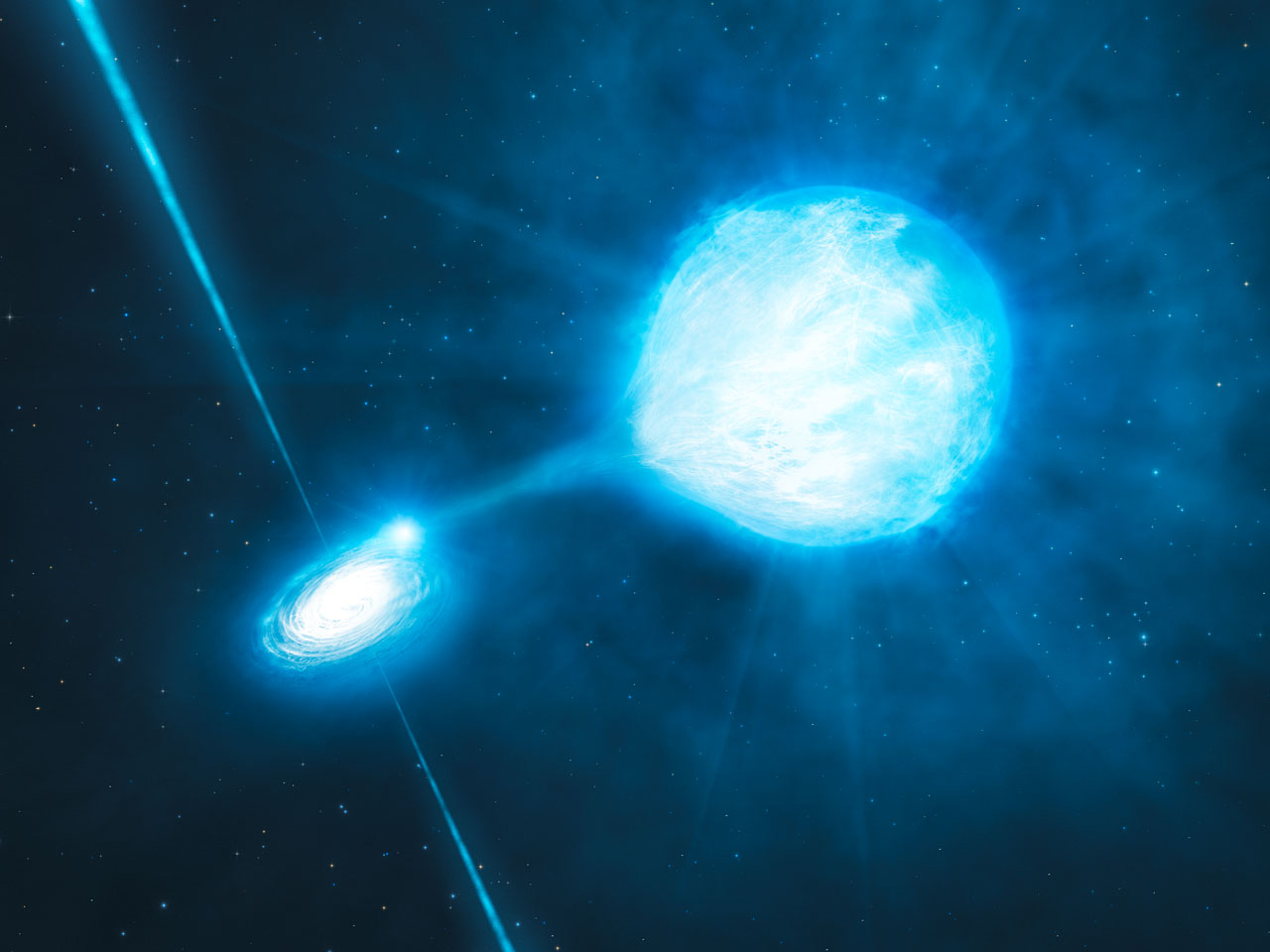"This is the most distant stellar-mass black hole ever weighed, and it's the first one we've seen outside our own galactic neighborhood, the Local Group," says Paul Crowther, Professor of Astrophysics at the University of Sheffield and lead author of the paper appearing in Monthly Notices of the Royal Astronomical Society.
The black hole's curious partner is a Wolf–Rayet star, which also has a mass of about twenty times as much as the Sun. Wolf–Rayet stars are near the end of their lives and expel most of their outer layers into their surroundings before exploding as supernovae, with their cores imploding to form black holes.
In 2007, an X-ray instrument aboard NASA's Swift observatory scrutinised the surroundings of the brightest X-ray source in NGC 300 discovered earlier with the European Space Agency's XMM-Newton X-ray observatory. "We recorded periodic, extremely intense X-ray emission, a clue that a black hole might be lurking in the area," explains team member Stefania Carpano from ESA.

This artist's impression depicts the newly discovered stellar-mass black hole in the spiral galaxy NGC 300. The black hole has a mass of about twenty times the mass of the Sun and is associated with a WolfRayet star; a star that will become a black hole itself.
(Photo Credit: ESO/L. Calçada)
Thanks to new observations performed with the FORS2 instrument mounted on ESO's Very Large Telescope, astronomers have confirmed their earlier hunch. The new data show that the black hole and the Wolf–Rayet star dance around each other in a diabolic waltz, with a period of about 32 hours. The astronomers also found that the black hole is stripping matter away from the star as they orbit each other.
"This is indeed a very 'intimate' couple," notes collaborator Robin Barnard. "How such a tightly bound system has been formed is still a mystery."
Only one other system of this type has previously been seen, but other systems comprising a black hole and a companion star are not unknown to astronomers. Based on these systems, the astronomers see a connection between black hole mass and galactic chemistry. "We have noticed that the most massive black holes tend to be found in smaller galaxies that contain less 'heavy' chemical elements," says Crowther. "Bigger galaxies that are richer in heavy elements, such as the Milky Way, only succeed in producing black holes with smaller masses."
Astronomers believe that a higher concentration of heavy chemical elements influences how a massive star evolves, increasing how much matter it sheds, resulting in a smaller black hole when the remnant finally collapses.
In less than a million years, it will be the Wolf–Rayet star's turn to go supernova and become a black hole. "If the system survives this second explosion, the two black holes will merge, emitting copious amounts of energy in the form of gravitational waves as they combine," concludes Crowther. However, it will take some few billion years until the actual merger, far longer than human timescales. "Our study does however show that such systems might exist, and those that have already evolved into a binary black hole might be detected by probes of gravitational waves, such as LIGO or Virgo."






Comments